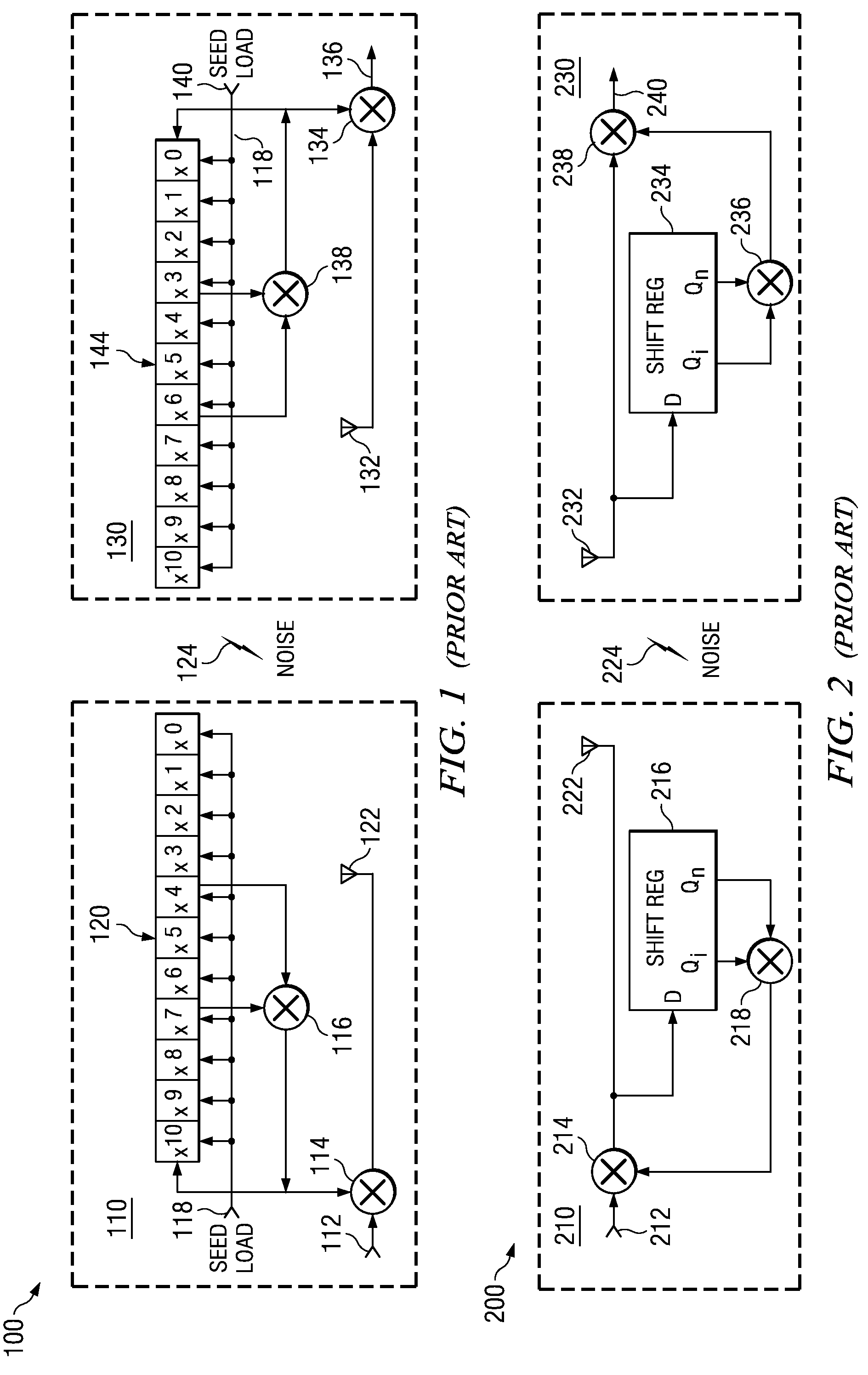Separate self-synchronizing packet-based scrambler having replay variation
- Summary
- Abstract
- Description
- Claims
- Application Information
AI Technical Summary
Benefits of technology
Problems solved by technology
Method used
Image
Examples
Embodiment Construction
and the accompanying drawings.
BRIEF DESCRIPTION OF THE DRAWINGS
[0019]For a more complete understanding of the present invention and the advantages thereof, reference is now made to the following description taken in conjunction with the accompanying drawings in which like reference numbers indicate like features and wherein:
[0020]FIG. 1 shows a scrambling / descrambling arrangement of a known synchronizing scrambler;
[0021]FIG. 2 displays a scrambling / descrambling arrangement of a known self-synchronizing scrambler;
[0022]FIG. 3 illustrates a scrambling / descrambling arrangement of a separated synchronizing scrambler in accordance with the present invention.
DETAILED DESCRIPTION OF PREFERRED EMBODIMENTS
[0023]The present invention will now be described more fully hereinafter with reference to the accompanying drawings, in which embodiments of the invention are shown. This invention may, however, be embodied in many different forms and should not be construed as limited to the embodiments s...
PUM
 Login to View More
Login to View More Abstract
Description
Claims
Application Information
 Login to View More
Login to View More - R&D
- Intellectual Property
- Life Sciences
- Materials
- Tech Scout
- Unparalleled Data Quality
- Higher Quality Content
- 60% Fewer Hallucinations
Browse by: Latest US Patents, China's latest patents, Technical Efficacy Thesaurus, Application Domain, Technology Topic, Popular Technical Reports.
© 2025 PatSnap. All rights reserved.Legal|Privacy policy|Modern Slavery Act Transparency Statement|Sitemap|About US| Contact US: help@patsnap.com



